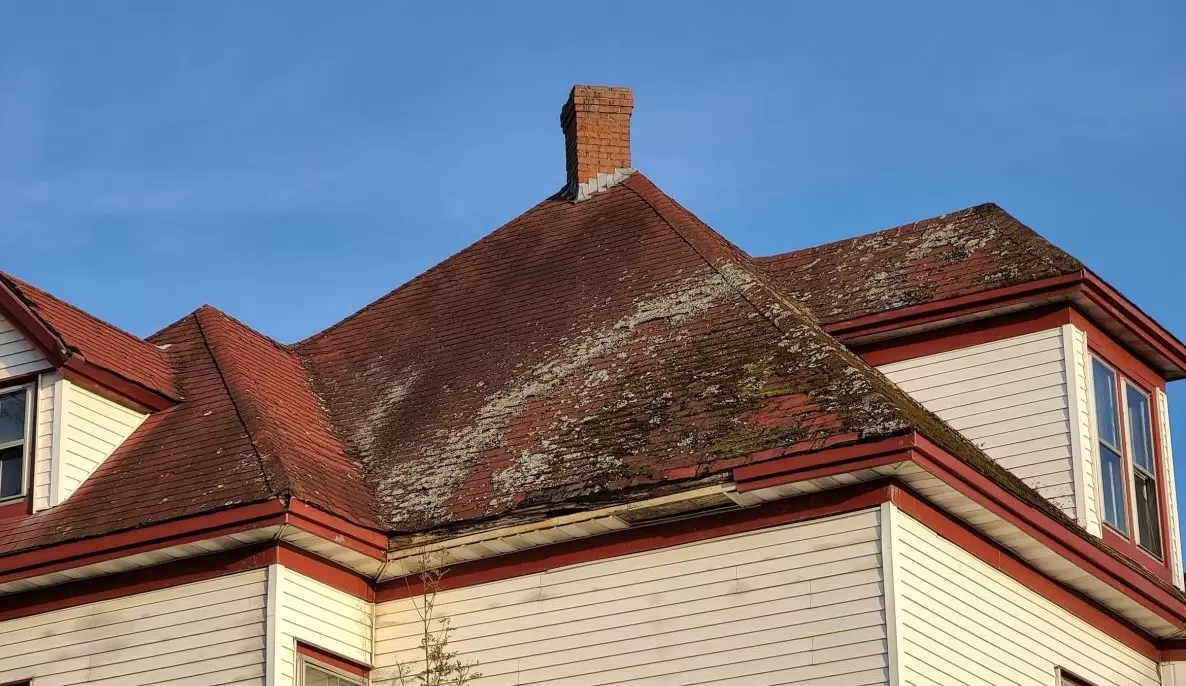Understanding the importance of advanced coating solutions is essential for roof maintenance companies aiming to tackle common issues found in shingle and tile roofs effectively. In this article, we’ll explore why incorporating these advanced coatings into your services is a smart strategy for delivering long-lasting, high-quality results for your clients while addressing the frequent challenges associated with shingle and tile roofing and finding solutions for them.
Before diving into the details, let’s briefly explore the key terms mentioned in this blog in the context of roofing materials:
Rust: Rust is the red or orange oxide that forms on iron or steel when exposed to oxygen and moisture over time. It is essentially a slow form of burning. Rust is a specific type of corrosion that occurs on metal roofing materials, weakening the metal and leading to structural damage and a reduced lifespan.
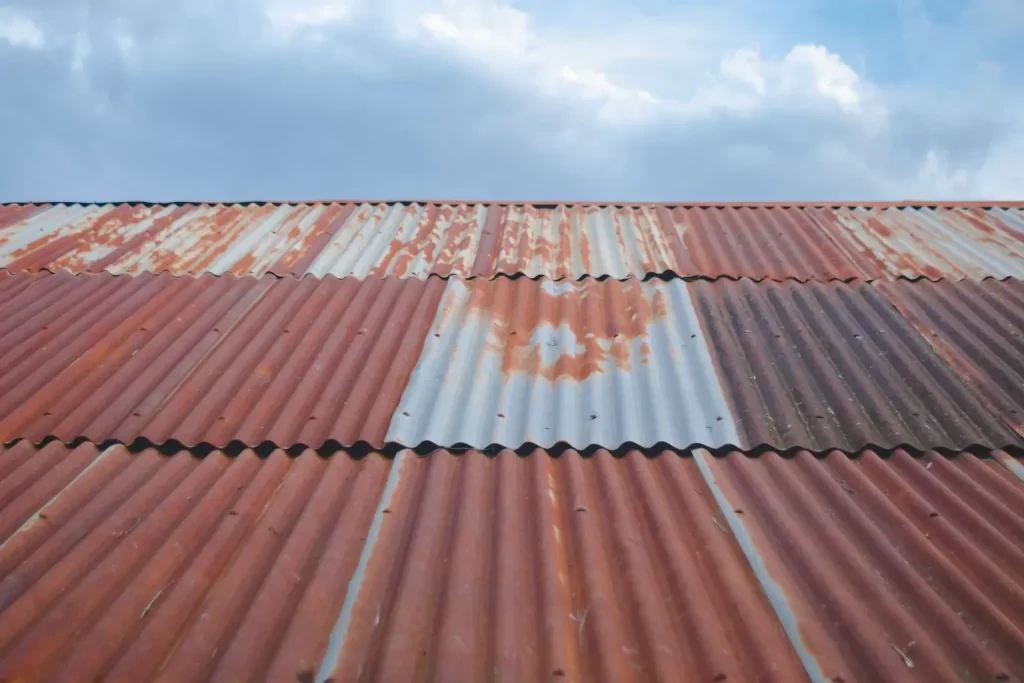
Mold: Mold is a type of fungus that thrives in moist environments, often appearing as black, green, or white patches. In roofing, mold can develop on materials like shingles or tiles, particularly in humid or shaded areas. It can cause discoloration, deterioration of roofing materials, and potential health hazards.
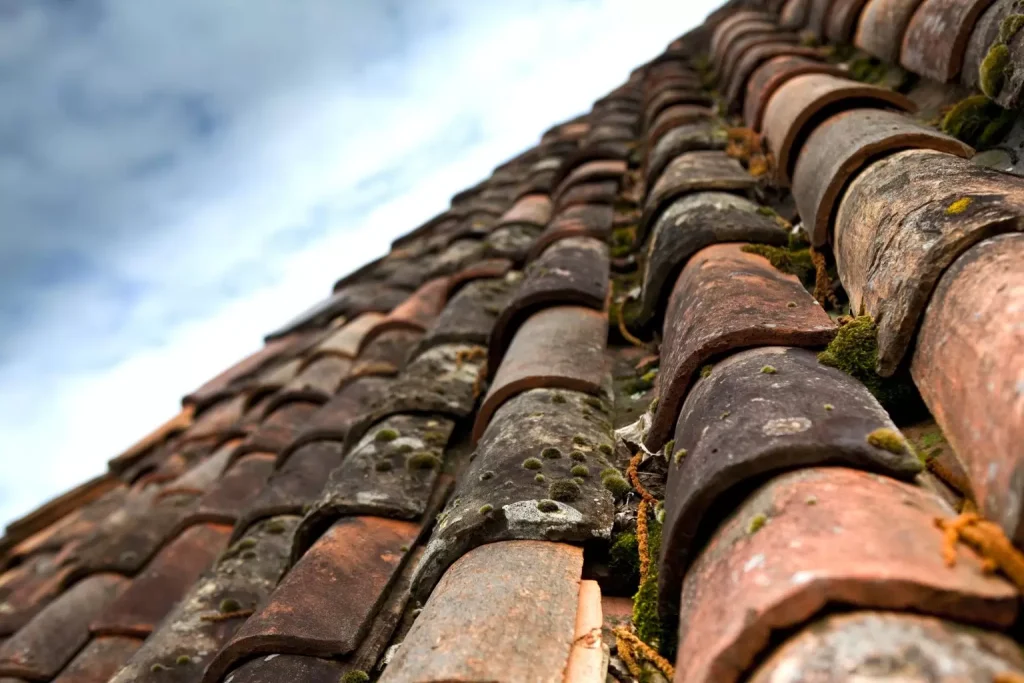
Corrosion: Corrosion is the gradual degradation of materials, especially metals, due to chemical reactions with environmental elements like oxygen, moisture, or pollutants. In roofing, corrosion affects metal materials such as steel and aluminum, weakening them over time and potentially leading to roof failure.
Stain: A stain is a discoloration or spot caused by the absorption of a substance into a material’s surface. In roofing, stains are often caused by water, algae, or mold accumulation. While typically cosmetic, stains can indicate underlying issues like leaks or mold growth and may also result from rusting metal components that leave streaks on the roof.
When water accumulates on a roof and the roofing material absorbs the water and moisture, it interacts with organic material, creating an ideal environment for mold to thrive. As mold spreads, it can compromise the roof’s structural integrity, leading to significant damage over time. Mold growth is typically caused by moisture, limited sunlight, and organic debris on shingles. When moisture from precipitation combines with areas of the roof that receive little sunlight, the conditions become perfect for mold to develop or rust to occur for metal roofing. Addressing this issue promptly is crucial to prevent damage and extend the roof’s lifespan.
Recognizing the signs of roof mold early can help you address the issue promptly. Look for these indicators and inform homeowners about those issues.
- Discoloration: Dark or black shingle streaks may signal mold, often appearing uneven and unrelated to normal aging.
- Stains on Ceilings or Walls: Water stains may indicate a roof leak, which can lead to mold growth.
- Corrosion and Rust for Metal Roofing: If metal roofs do not have a protective layer, humid and warm weather will cause corrosion and rust, which will shorten the roof’s lifetime.
- Musty Odor: An earthy or musty smell in the attic could indicate mold.
- Visible Growth: Mold may appear on shingles, especially in poorly lit, poorly ventilated areas with organic debris.
- Warping Shingles: Curling or warping shingles, especially on a newer roof, might indicate mold damage.
- Increased Allergies: A sudden rise in allergies could point to mold in the home, including on the roof. Mold produces allergenic compounds, including mycotoxins and microbial volatile organic compounds (MVOCs). Mycotoxins are toxic substances produced by certain molds that can irritate the respiratory system and trigger allergic responses. MVOCs contribute to the musty odor associated with mold and can also irritate the eyes, nose, and throat.
To understand the issues and choose the best solutions, let’s briefly revise the types of roofing materials.
Metal Roofs
- Galvanized Steel: This is steel coated with zinc. It’s a durable and cost-effective option, making it popular for residential use.
- Aluminum Roofing Materials: Aluminum roofs are lightweight, slightly resistant to rust, and ideal for homes in coastal areas where saltwater corrosion and acid rains are concerns. They’re also highly reflective, which can help reduce cooling costs in hot climates. Aluminum roofs can be painted in various colors to match the home’s aesthetic.
- Copper Roofing Materials: While less common due to its higher cost, copper is sometimes used in residential roofing for its distinctive appearance and exceptional longevity. Copper roofs naturally develop a patina, changing color due to a natural oxidation process. It can be an unwanted effect for some homeowners who prefer the original look of copper.
Since they are all metal, any cracks or scratches on the surface, under the moisture and hot weather conditions, or exposure to acid rains or intense mineral-loaded rains. Rusting and corrosion is still an issue for metal roofing materials. Also, it would help if you dealt with improper insulation, holes, and deterioration of metal roofs.
Other Common Roofing Materials and Their Structural Cons
Asphalt Shingles: Made from a base mat of fiberglass or organic materials, coated with asphalt, and topped with ceramic granules for UV protection and color. Typically, lasts about 20 years with good maintenance, but it may need replacement sooner in harsh climates and improper maintenance. In humid environments, asphalt shingles can develop moss or algae easily, leading to discoloration and potential water damage if not cleaned regularly.
Clay and Concrete Tiles: Individual tiles made from natural clay, molded concrete, or similar mineral mixtures; typically heavy and comparatively durable. Worse than asphalt shingles, clay, and concrete tiles can quickly develop moss or algae due to their high water absorption and rough surfaces that trap organic materials, especially in shaded or humid areas. This requires periodic cleaning, and the rough surfaces make maintenance and cleaning particularly challenging.
Wood Shakes and Shingles: They are made from natural wood, typically cedar, redwood, or pine, split (shakes) or sawn (shingles) into tapered pieces. Requires regular maintenance, including cleaning, staining, and treating for mold, mildew, and insect damage. High water and moisture absorption is the nature of wooden material. Furthermore, wood can rot or decay over time, especially in damp climates, necessitating more frequent replacements or repairs.
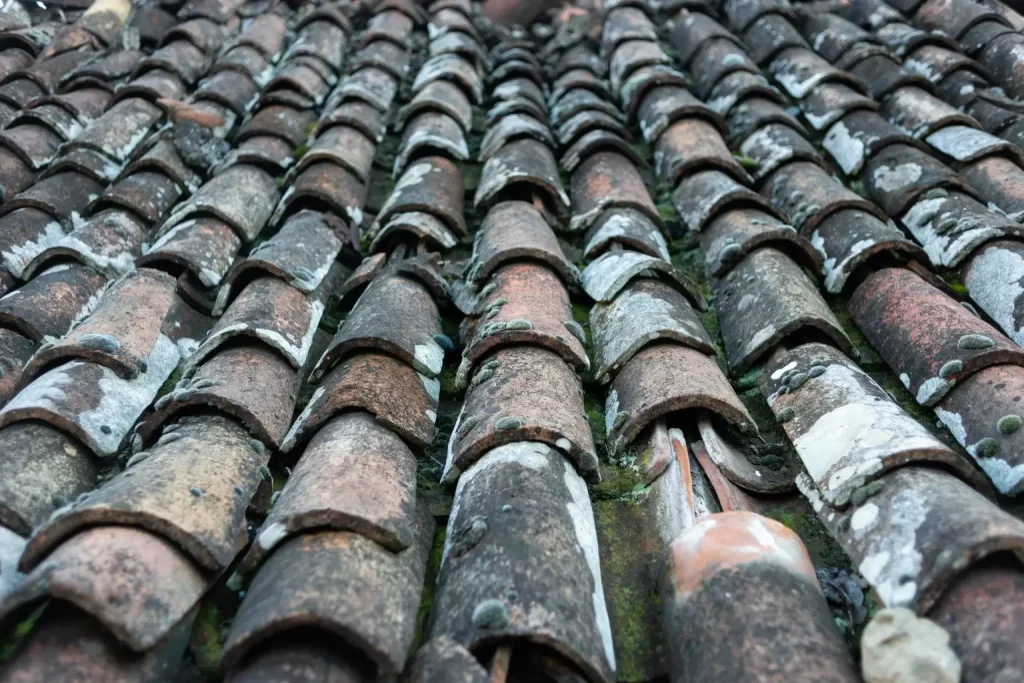
Roof Installation and Maintenance Costs
A roof is one of a building’s most crucial components. It provides protection from the elements and contributes to energy efficiency and overall property value. However, the installation of a new roof and its ongoing maintenance involve significant costs.
The choice of roofing material significantly impacts installation costs. For example, asphalt shingles are affordable and widely used. Metal roofs are durable and energy-efficient but come with a higher price tag. Clay and concrete tiles are known for their longevity and aesthetic appeal but are more expensive.
Roof maintenance includes cleaning, debris removal, and repairs. Keeping the roof clean is essential for preventing damage and maintaining its lifespan. Removing leaves, branches, and other debris that can cause blockages or damage is also essential. Typical repairs include fixing leaks, replacing damaged shingles or tiles, and addressing issues with flashing. Roof installation and maintenance are significant investments that require careful consideration of materials, labor, and ongoing upkeep. You can extend the lifespan of the roofs with Nasiol Nano Coatings. In this way, you can avoid the roof repair cost.
Roof Coatings, Pros and Cons:
There are various types of coatings applied to roofing materials, ranging from paints to thicker coatings like acrylic, polyurethanes, EPDM, and other polymeric types. These coatings, while effective in providing protection and enhancing durability, come with several drawbacks. They are comparatively heavy, adding stress to the roof structure, and are often expensive and time-consuming to apply. Additionally, they emit strong odors during the drying process, which can be unpleasant. Furthermore, these coatings may not hold up well under extreme weather conditions, particularly in regions with wide temperature fluctuations throughout the year, leading to potential cracking, peeling, or degradation over time.
A new era in roofing material coatings has arrived with high-tech, nano-engineered solutions. These tailored nano coatings are designed for each specific type of surface material, combining the advantages of exceptional durability with easy application. This innovation offers a groundbreaking solution for the protection of all types of roofing materials, revolutionizing the roofing industry.
The Science Behind Roof Nano Coatings: Enhancing Your Service Quality
Scientifically engineered and modified nanoparticles are incorporated into coating mixtures, offering various advanced properties such as hydrophobicity, antimicrobial action, UV resistance, scratch resistance, and moisture blocking. These nanocoatings are formulated with chemical bonding agents tailored to each surface type, ensuring optimal performance. Despite their thin and lightweight nature, they provide robust protection and are designed to be environmentally friendly and safe for human health during manufacturing and application. Developed with ease of use in mind, these ready-to-apply nano coatings represent a significant advancement in the roofing industry, enhancing both durability and appearance.
The Hydrophobic, Antirust and Antimold Properties Your Clients will Appreciate
Nasiol Nano Coatings offers unparalleled solutions for the roofing industry. When applied to surfaces, these coatings provide exceptional hydrophobicity, effectively addressing the primary issues caused by moisture and water accumulation or absorption in bare roofing materials. By repelling moisture and water, they prevent the key factors that lead to mold growth, discoloration, rust, and corrosion. Additionally, Nasiol Nano Coatings are specially formulated to protect against harsh weather conditions, including UV exposure and acid rain, ensuring long-lasting durability and protection for roofing materials.
Nasiol Z Series Nano Coatings for Mineral Surfaces: The Z series of nanocoatings are hydrophobic, oleophobic, and stain-resistant industrial nano protection products for absorbent mineral surfaces. Water—or alcohol-based product options are available.
Consumption of Z: 40-60 ml/m2 or, in other terms, 8-12 liters for 200 m2 roof area
Consumption of Z-WB: 60-90 ml/m2 or, in other terms, 12-18 liters for 200 m2 roof area
How to apply: Any type of spraying system capable of applying homogeneously can be preferred. Clean the surface properly and make sure that it is dry. Then, spray the product with an HVLP gun and let it dry.
Applicable to which roof materials: Clay and concrete tiles, asphalt shingles, stone shingles
Nasiol W Series Nano Coatings for Wooden Surfaces: The W series of nanocoatings are hydrophobic, oleophobic, and stain-resistant industrial nano protection products for natural wooden surfaces without a varnish or lacquer layer. Water—or alcohol-based product options are available.
Consumption of W: 40-60 ml/m2 or, in other terms, 8-12 liters for 200 m2 roof area
Consumption of W-WB: 70-100 ml/m2 or, in other terms, 14-20 liters for 200 m2 roof area
How to apply: Any type of spraying system capable of applying homogeneously can be preferred. Clean the surface properly and make sure that it is dry. Then, spray the product with an HVLP gun and let it dry.
Applicable to which roof materials: Wood shakes and shingles
Nasiol MP55 Nano Coating for Metal Surfaces: MP55 is a one-component rust and corrosion-resistant nano-coating developed for bare metal and alloy surfaces.
Consumption: 5-8 ml/m2 or, in other terms, 1-1,6 liters for 200 m2 roof area
How to apply: Clean the surface properly and make sure it is dry. Then spray the product with an HVLP gun and let it dry.
Applicable to which roof materials: Metal shakes and shingles
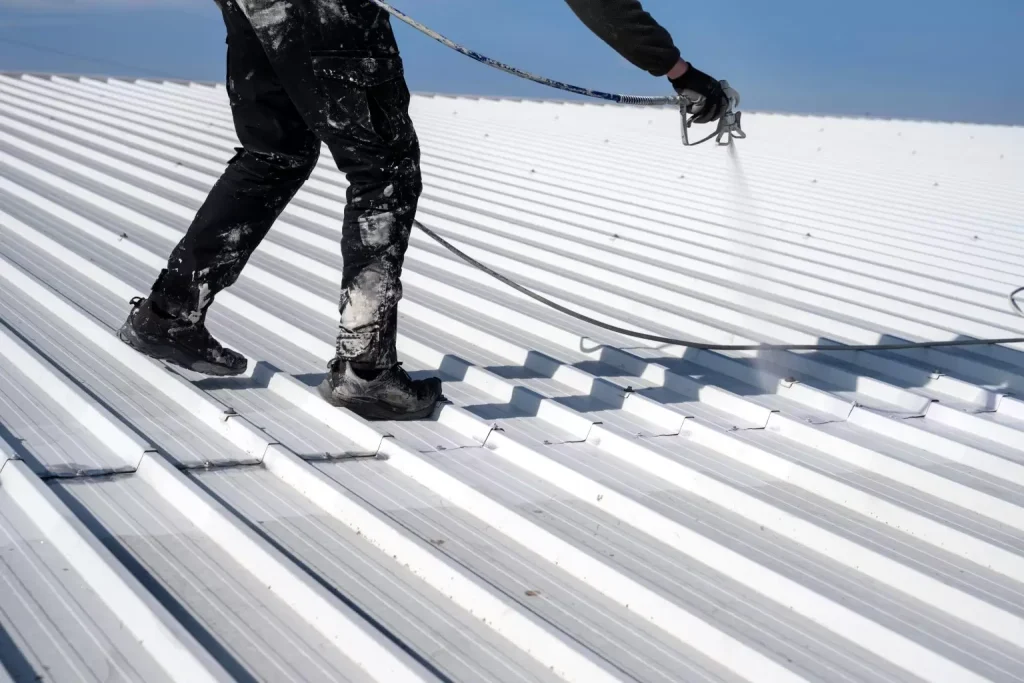
As a service provider in the roofing industry or restoration business, whether installing a new roof or providing cleaning and maintenance services, you must introduce your clients to the benefits of new technology coatings. These advanced nano coatings are designed to protect and extend the lifespan of roofs, offering impressive results that your clients will appreciate. By safeguarding the roof, you’re protecting your client’s investment and saving time and resources, allowing you to work more efficiently. Additionally, the reduced material and energy consumption contribute to environmental conservation. It’s a win-win situation that benefits both your business and the planet.
Whether as a Nasiol Solution Partner or Reseller, you can begin offering Nasiol Nano Coatings to your clients, or as a manufacturer, Nasiol can supply these coatings as OEM products under your brand for roof maintenance and protection. This empowers you to increase client loyalty by delivering long-lasting results, adding significant value to your maintenance business, and standing out against competitors in the market.
Expanding your service offerings with advanced roof coatings enhances your services and boost client satisfaction.
